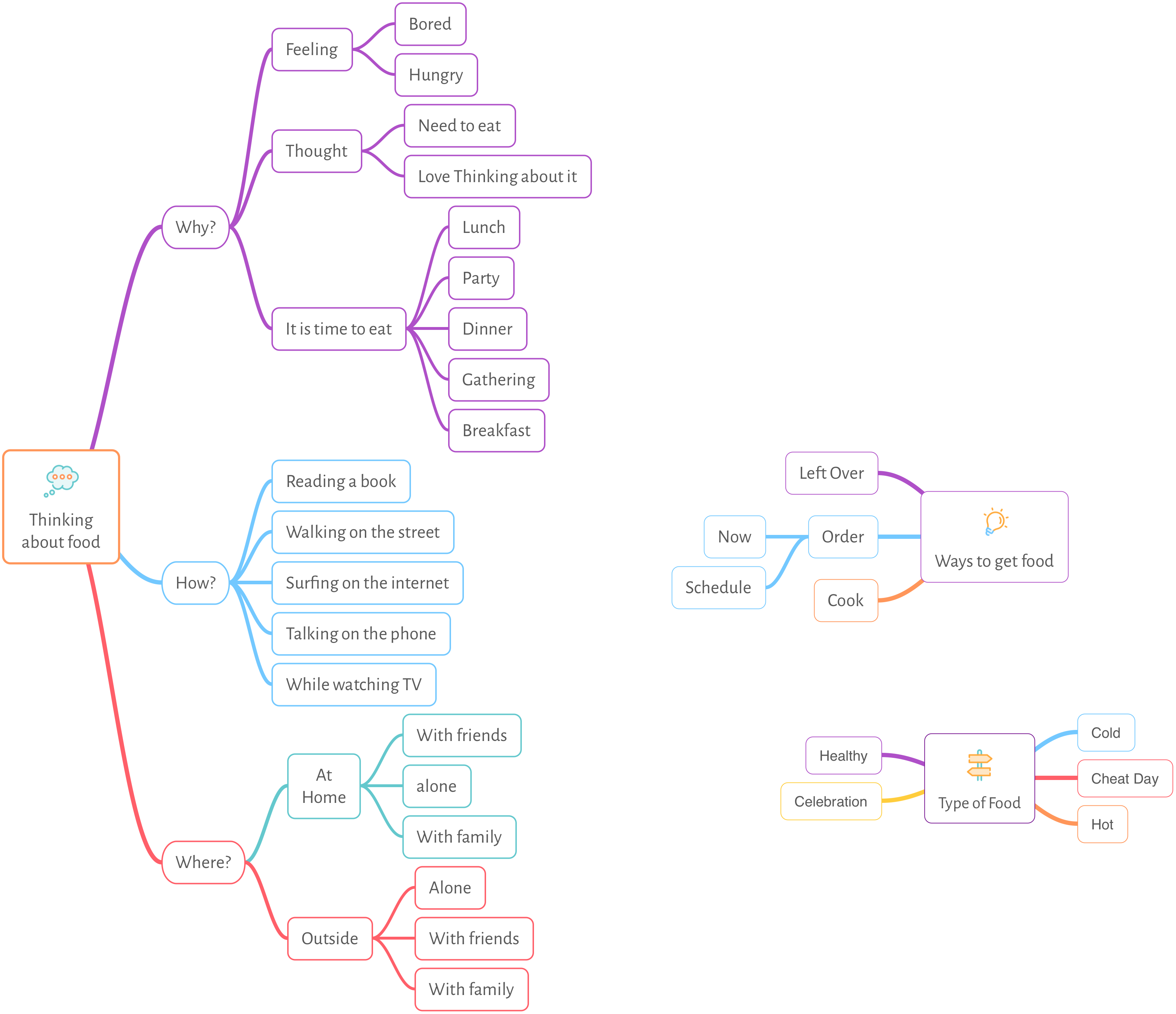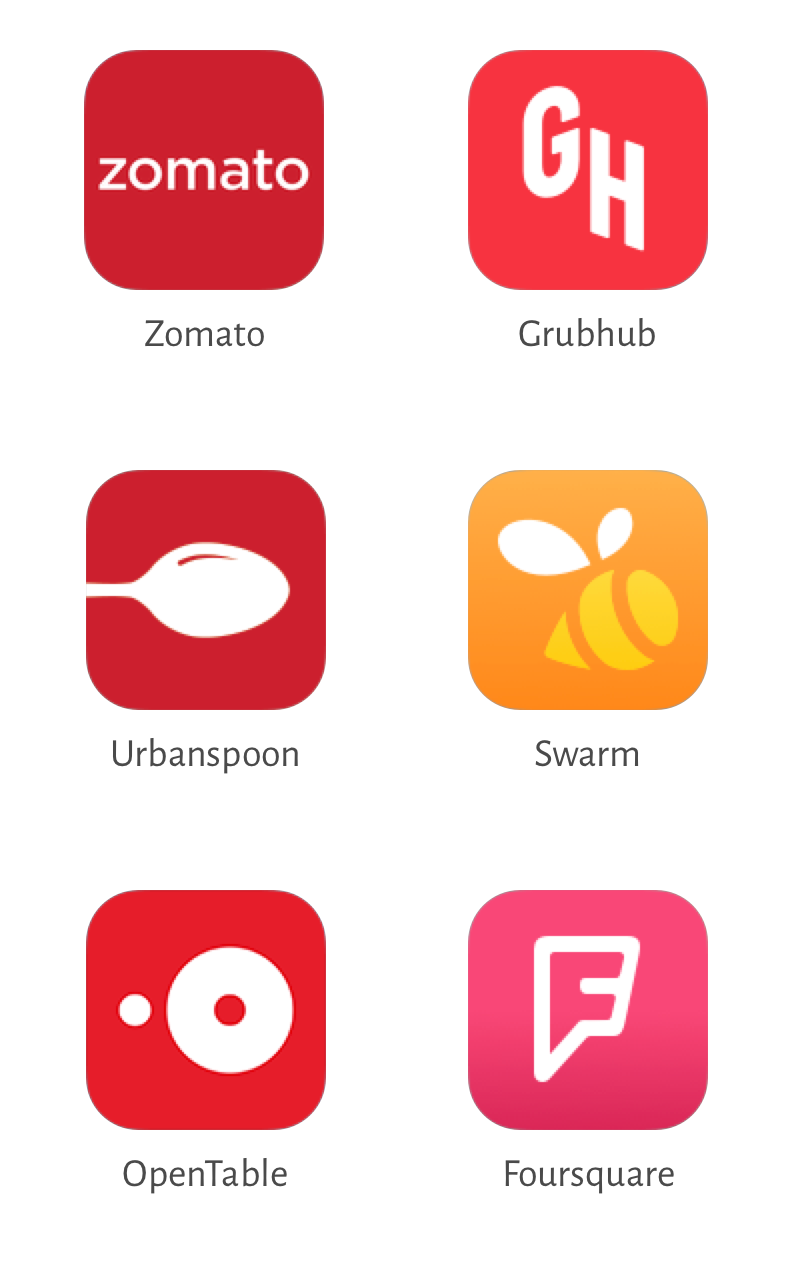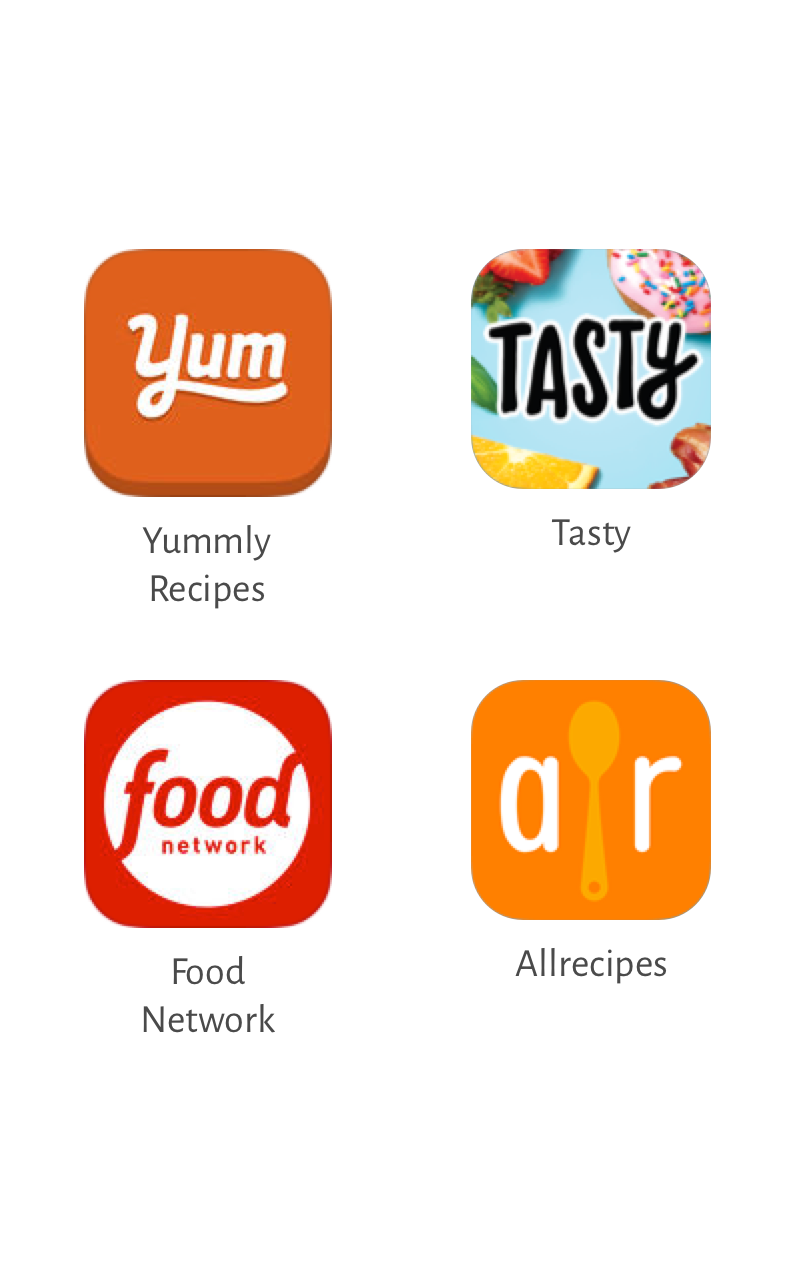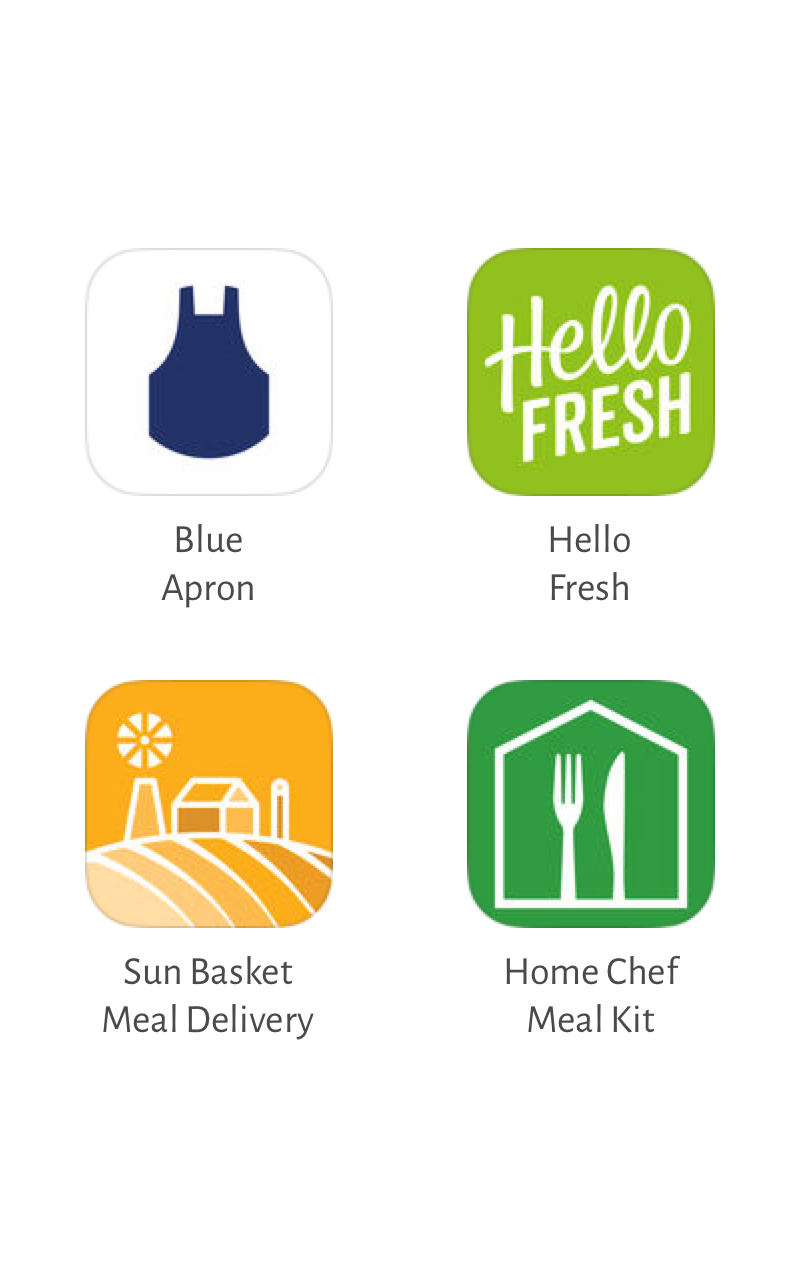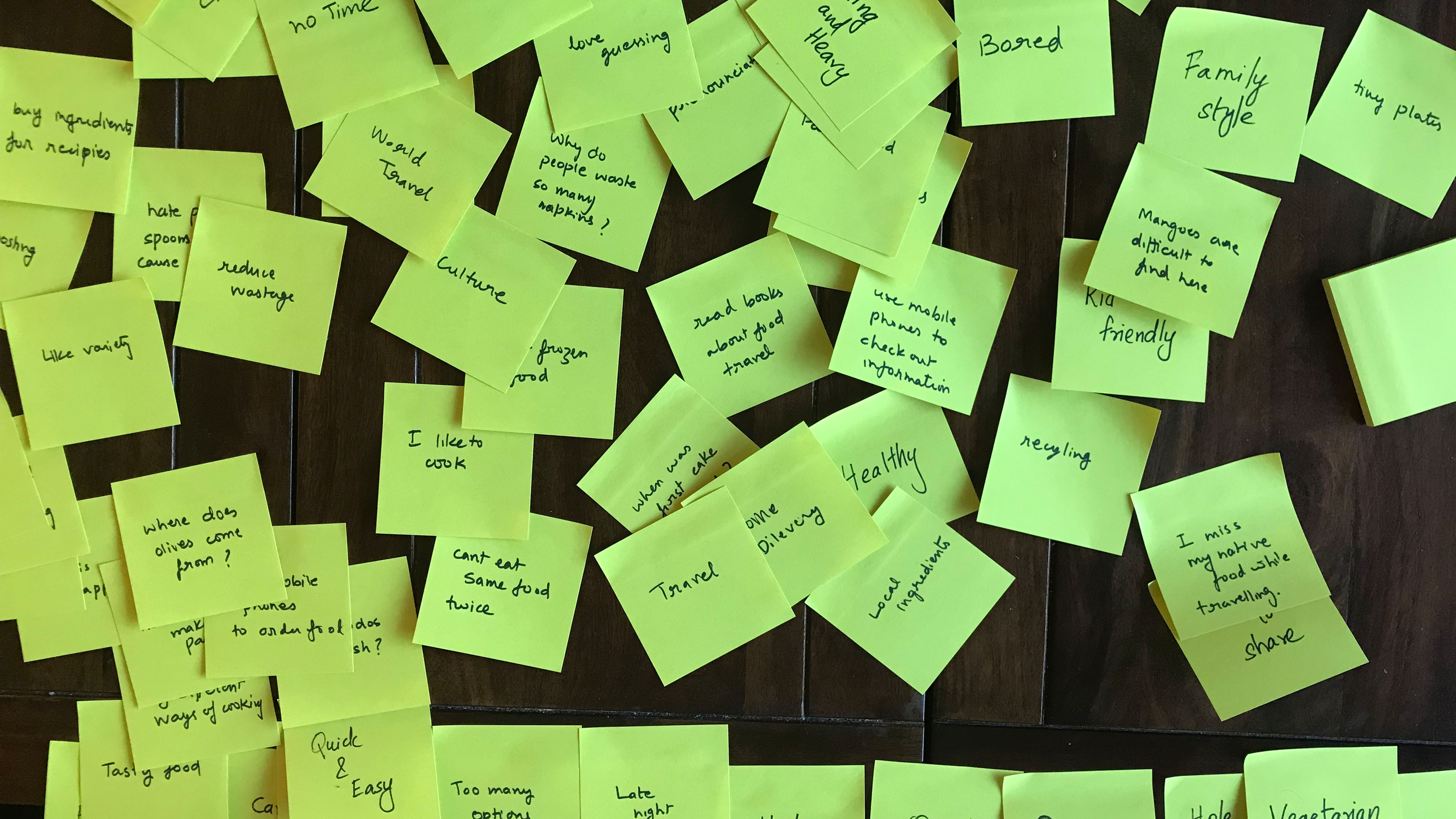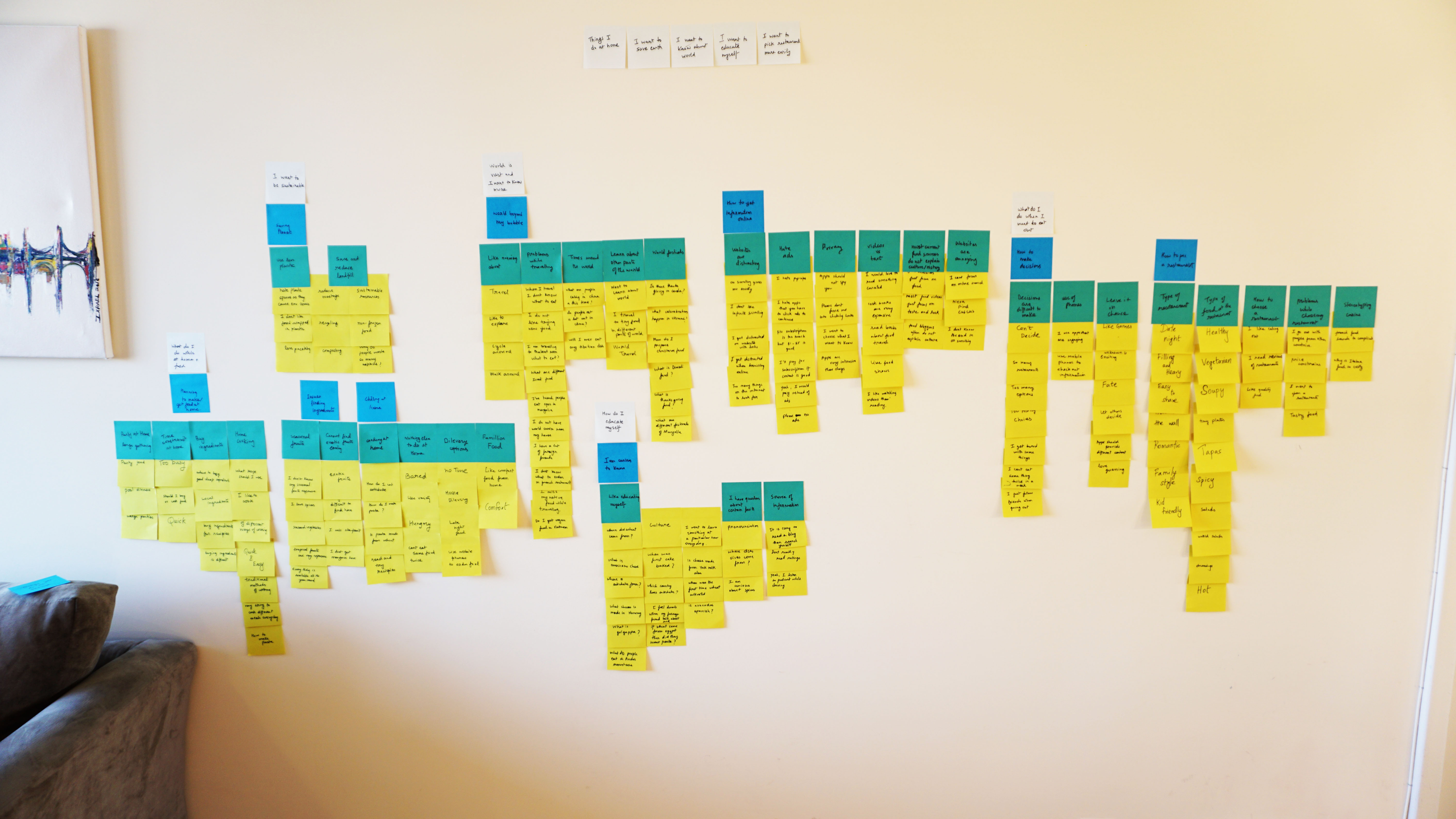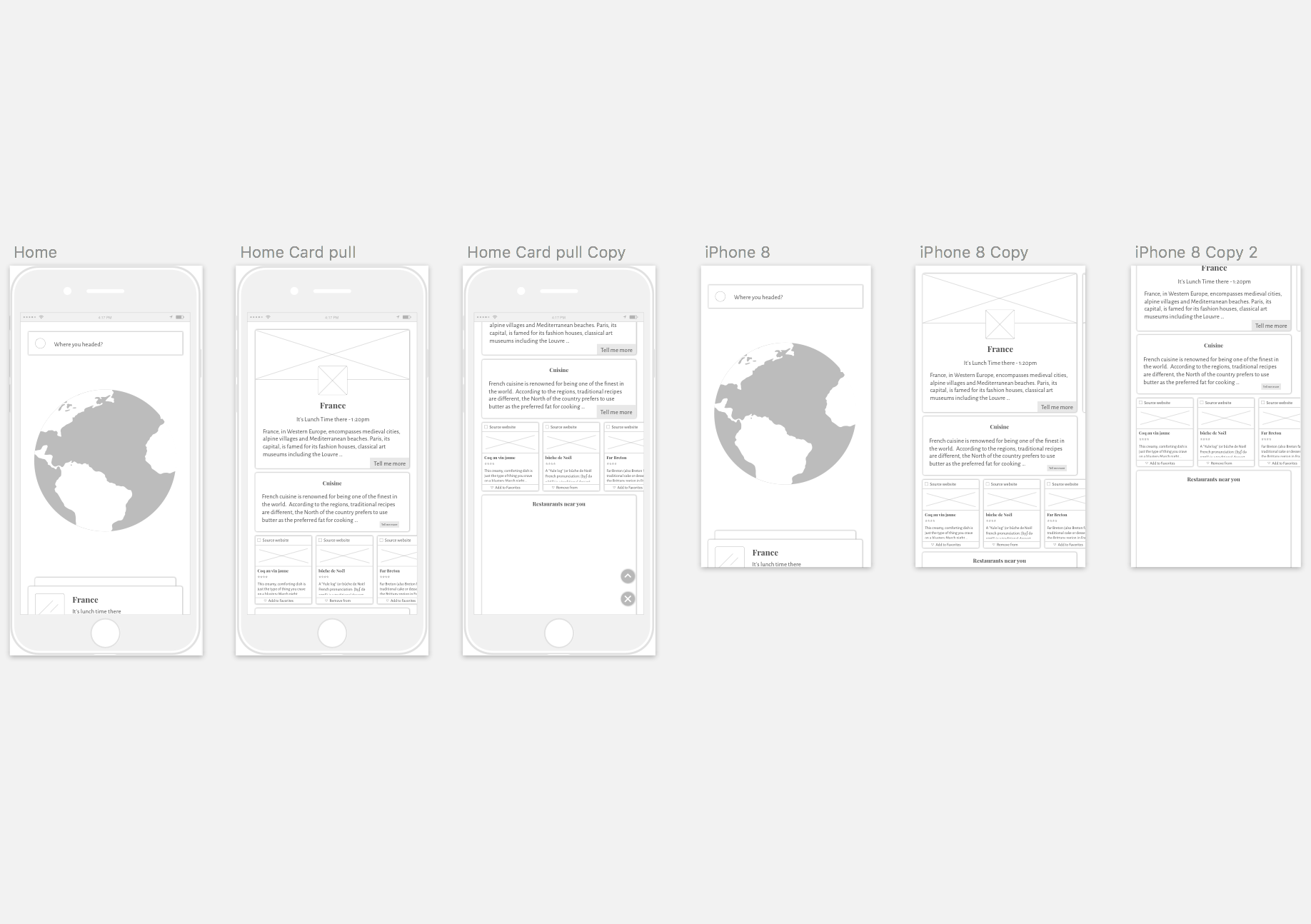Insights
Things people do about food at home
There was a lot of activities that users did at home while thinking about food. From researching about the next travel to cooking different meals, to ordering food for a bunch of friends. EATLAS should help the users in achieving all these activities.
I like comfort food from home when I am tired.
Where do I buy good cheap ingredients for my ethnic cuisine?
I like to learn different traditional ways of cooking.
Things people do to pick a restaurant faster
While there are many apps that help you pick and filter the restaurants that you want to order from or dine-in, but there is a lot of time spend on deciding which one to pick. EATLAS should help users pick restaurants they want quickly.
I go out with people of different countires all the time.
Decisions are very difficult to make, especially for a group of people.
I read reviews of the restaurants but they are getting a bit much.
Things people do to educate themselves about food
Users were curious about different types of food and culture. EATLAS should tap into this curiosity and help users enjoy learning and discovering new countries, food, and culture.
It is easy to read a food blog than to search information yourself.
I feel dumb when I go to french restaurants and have no idea what is on the menu.
I get distracted when I am browsing online.
Things people do to get more sustainable
A lot of users showed interests in being sustainable and save environment . EATLAS should help these users learn about different ways of achieving this.
I hate when restaurants pack plastic spoons when I order food at home.
I do not like food wrapped in plastic.
I would like to save money and share cooked food with friends.
Things people do when they were overwhelmend by the vast amount of information available
Last but not the least, users did not know what they did not know . Most of the users picked a few cuisines and countries and learned about them. Most of the curiosity came from their conversations with friends. EATLAS should help users discover countries beyond their reach and make this experience enjoyable.
I just follow my friends and let them pick a cuisine or the restaurant.
What are people eating in China these days?
When I travel I don't know what to eat.
 Eatlas
Eatlas  Home
Home


